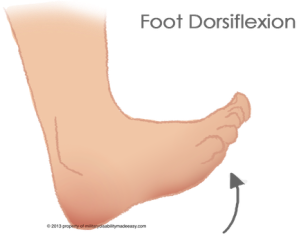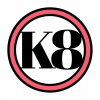Kneesles, pronounced like measles with a “Kn,” is my way of referring to knee pain.

Many suffer from achey knees and daily knee pains, especially women. It can be attributed to females’ larger Q angles, habitual leg crossing while seated, improper movement patterns, mobility deficits, and/or lack of muscular stability.
Knee Anatomy
Check out this awesome interactive knee image.
Bones:
- Femur
- Patella
- Tiba
- Fibula


Ligaments (Connect bone to bone):
- Collateral Ligaments:
- Lateral Collateral Ligament (LCL): Runs top to bottom on outside of knee joint
- Medial Collateral Ligament (MCL): Runs top to bottom on inside of knee joint

- Cruciate Ligaments:
- Anterior Cruciate Ligament (ACL): Runs from the outside (lateral side) of the femur to the tibia.
- Posterior Cruciate Ligament (PCL): Runs from the femur to the back of the tibia

Joint Structures:
- Medial Meniscus
- Lateral Meniscus

Tendons (Connect Muscles to Bones):
- Quadriceps Tendon

- Patella Tendon/Ligament

- IT Band (Iliotibial Band)

Causes of and Remedies for Knee Pain
-
The Vastus Medialis Obliquus (VMO)

This tricky little muscle, also known as the “tear drop,” is often under-recruited in lower body exercises (or over powered by the vastus lateralis). The VMO contributes to end-range (terminal) knee extension (from a slightly bent-knee position to a straight-knee position).
Some exercises to wake up the VMO:
- Terminal Knee Extensions with a Resistance Band
- Reverse Step-Ups
Imagine you are going up a stair backwards. I’d suggest using a smaller step than shown in this video to begin, possibly 4 inches high or so.
-
The Gluteus Medius
The gluteus medius is responsible for abducting (bringing the leg out to the side), externally rotating (turning the leg outward), and supporting the body when on one leg.
Some exercises to strengthen the gluteus medius (Side Note: autocorrect and latin-based muscle names are not my friend right now):
- Banded Squats
Squat with mini band below knees. For those of you with leg hair, I suggest a layer of clothing between your skin and the band.

- Banded Bridging

- Single Leg Deadlift (Romanian Deadlift)

-
The IT Band
The IT Band is a notoriously tight tissue. When this gets tense, it can cause the knee cap (patella) to not track (move) properly when the knee bends. The best remedy for this is regular foam rolling of this area. I suggest starting with a softer foam roller and increasing firmness of the foam roller as needed. Be sure to roll the entire IT Band including the area to the outside of the knee.

-
Limited Dorsiflexion
What is dorsiflexion? It’s the movement of the foot in the direction of the shin.
 Many have limited range. We compensate for this limitation through raising the heels or pronating the feet. You may have noticed people who raise their heels or over pronate their feet (collapsed inward) in the bottom points of squats and deadlifts.
Many have limited range. We compensate for this limitation through raising the heels or pronating the feet. You may have noticed people who raise their heels or over pronate their feet (collapsed inward) in the bottom points of squats and deadlifts.

A couple exercises to work on this:
- Stretch and foam roll the Gastrocnemius and Soleus (Calf Muscles)
- Rocking Ankle Mobility Drill
- Knee Break Ankle Mobilization
Regardless of if you have a case of the kneesles, give these exercises a shot!
How do you keep your knees healthy?
Further Reading:
Knee Valgus (Valgus Collapse), Glute Medius Strengthening, Band Hip Abduction Exercises, and Ankle Dorsiflexion Drills By Bret Contreras
18 Tips for Bulletproof Knees by Mike Robertson









Awesome and helpful information!!! Thanks K8!! You are amazing!!!
LikeLike